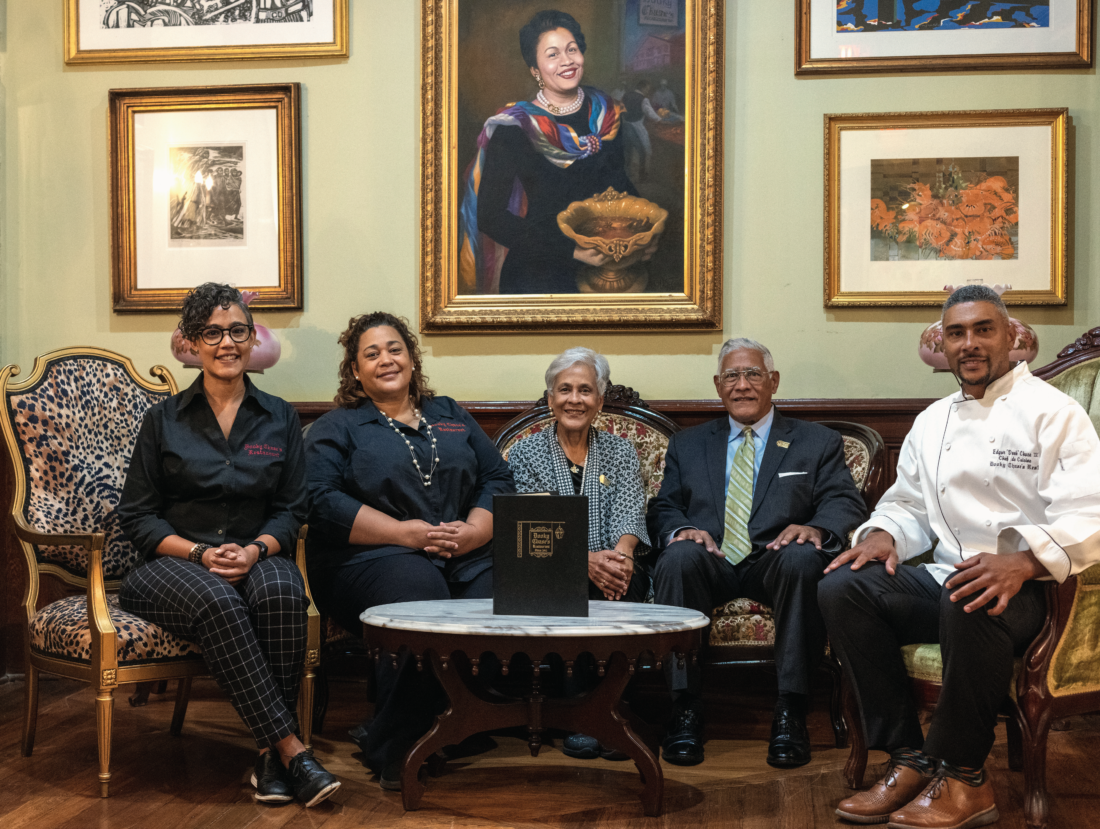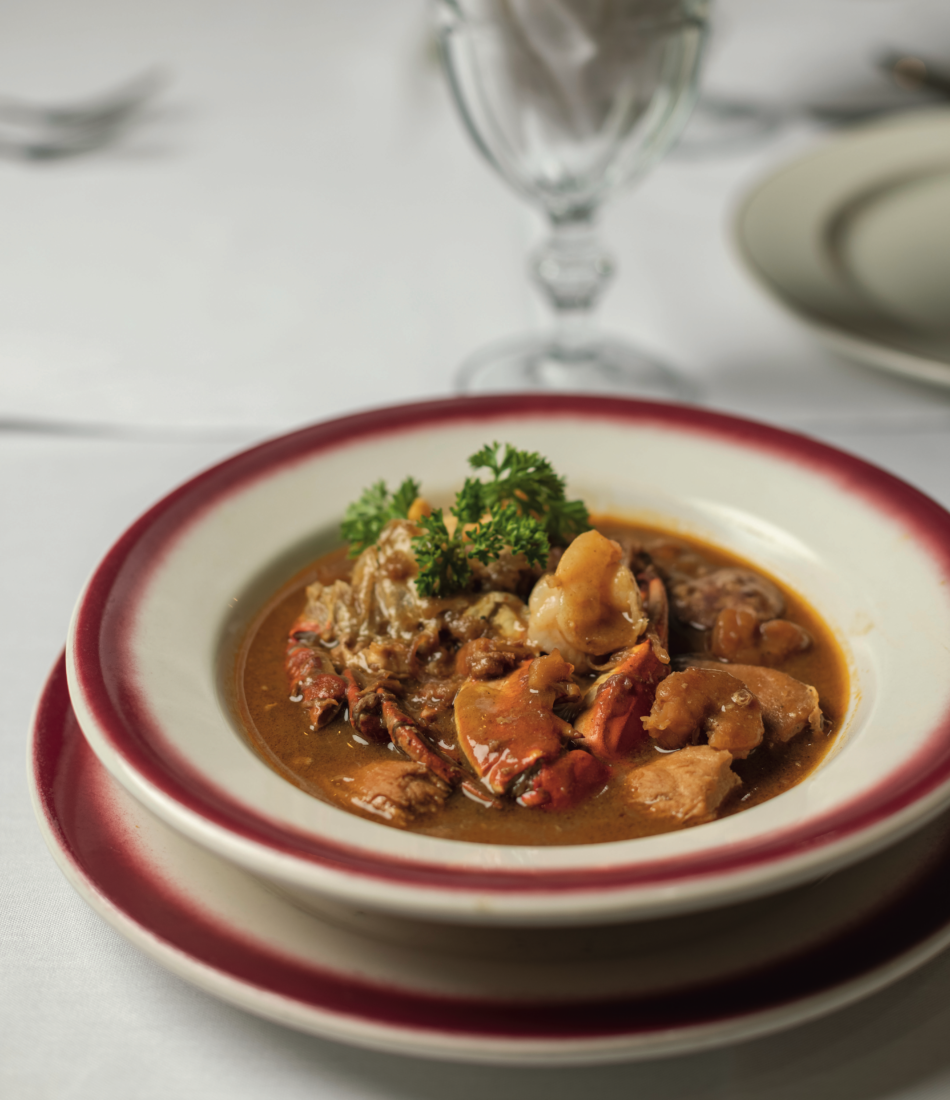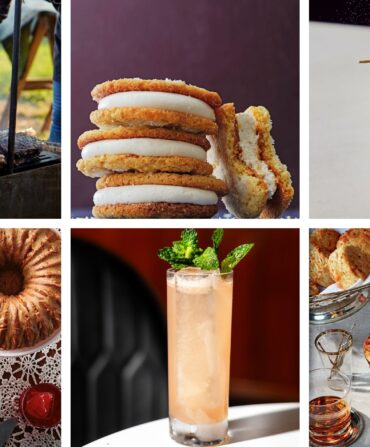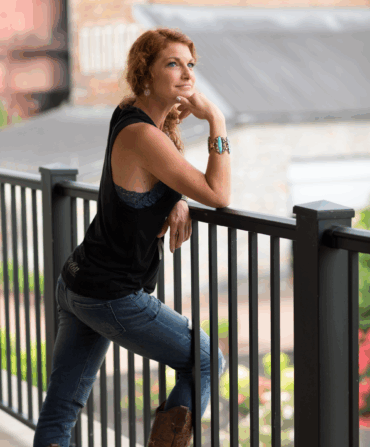Sporting a trim ecru suit, Edgar L. “Dooky” Chase III works the chandelier-lit main dining room at Dooky Chase’s. He bumps fists and smiles big. I can’t hear what he says, but grins on the faces of regulars tell me he’s asking after children, checking on parents, doling out compliments. Founded in 1941, Dooky Chase’s, in the Tremé neighborhood of New Orleans, rose to fame on the talent and determination of his late mother, Leah Chase.
His elegant sisters, Stella Chase Reese and Leah Chase Kamata, and niece Tracie Haydel Griffin take turns commanding the host stand, where a sign dictates behavior at their Creole restaurant: no midriffs that expose stomachs, no ripped jeans that expose upper thighs and buttocks. Here, diners dress for lunch, men never wear ball caps, and, over four visits in two weeks, I see only one fool talking on a cell phone.
Guests enter Dooky Chase’s through a vestibule painted yellow and stacked with family portraits. A photograph of President Obama seated at a table, taken the year he won office, hangs above the entrance to the dining room. Tucking his napkin in like a cravat, Obama looks ready to eat gumbo. A moment after the shot, Leah Chase famously chastised him for putting hot sauce in her gumbo before tasting it.

Edgar L. “Dook” Chase IV, her grandson, now runs the kitchen. The gumbo here is still worth that kind of reverence. Most restaurant versions are thick with dark roux. The Chases serve a brothy gumbo instead, floated with chunks of ham, chicken, two kinds of sausage, crescents of shrimp, and blue crab. It tastes light and bright, if a dish made with that many proteins can be light. Order red beans with dark-meat fried chicken. Lean over your bowl as you bite into a thigh. If you get the angle right, crust will fall into your beans and add crunch like croutons in a salad.
In the late 1990s, when I began to travel here to eat and drink, Dooky Chase’s also sold from a window on Orleans Avenue. Instead of sitting for lunch, I bought takeaway foam bowls of that gumbo. And po’boys rolled in paper sleeves. Though the takeaway window is long gone, the po’boys remain very good, especially when stuffed with fried shrimp. Butterflied and robed in corn flour, the shrimp that spill from those loaves taste briny and sweet like the Gulf in which they swam. Served on cottony French bread swabbed with mayonnaise and stacked with pickles, Dooky Chase’s po’boys are sleepers in a city where more people argue about po’boys than politics.
Leah Chase began collecting art in the 1970s. Over time, she transformed the restaurant into an everyday museum, open to all for the price of lunch. Wander the dining room, peering over tables to look at paintings by Jacob Lawrence and woodblocks by Elizabeth Catlett, and you also get to survey what everyone else is eating. Chances are good that a bowl of shrimp Clemenceau will be on every other table. Bobbing with mushrooms, potatoes, and green peas, it’s a holdover from the days when Dooky Chase’s was the big-night-out restaurant for Creoles in New Orleans. Ditto stuffed shrimp, gorged with a mix of crabmeat, perfumed with what tastes like Worcestershire sauce, served atop a mound of Brabant potatoes. And chicken Creole, accented by a timbale of tomatoey jambalaya, floating in an herb-laced chicken-soup-style broth.
My connection to Leah Chase, who died in 2019, was personal. She served the Southern Foodways Alliance as our first board president. At our symposium in 1999, she cooked that Dooky Chase’s gumbo. I cherish a photograph from the weekend in which she stands behind a monster gumbo pot, ladle in hand. The photo shows more of the pot than her. That seems right. No matter how hard friends and family fought to pull her from behind her pot, Leah Chase fought harder to remain in the kitchen, to cook and serve until she passed at age ninety-six.
Like many admirers, I saw something inspiring in her generous spirit and fierce work ethic. And I feared that something might not come this way again. We should not have worried. Dook, who began his career here when his grandmother still directed the kitchen, cooks like this menu is his birthright. Eve Marie Haydel, his cousin who recently moved home to take over the bar, has built a cocktail list worthy of the years when James Baldwin was a regular. (Try the Grand D, made with rye and orange.) Best of all, servers here broadcast that buoyant charm Leah Chase showed. Terry Waters, a six-year veteran, is my favorite. On the front of his uniform, he wears a pin, shaped like the outline of Mrs. Chase’s face and inscribed with the legend PRAY, WORK, DO FOR OTHERS. It was her mantra, he says. Now it’s his.
On the way home from lunch on my last afternoon in town, my Uber driver leans over the seat to talk. “I wish I’d gotten a chance to go there when that lady was alive,” he says. “That would have been something.” I tell him that he’s right. Mrs. Chase was a wonder. And she remains an inspiration. But he’s missing out on a bigger truth. What’s going on right now at Dooky Chase’s is something, too.








